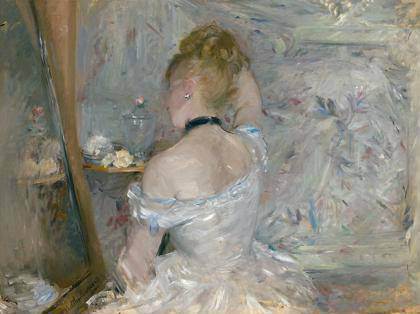
Giovanni Battista Moroni: “Isotta Brembati”, ca. 1555–56. Oil on canvas 63 x 45 1/4 inches. Fondazione Museo di Palazzo Moroni, Bergamo – Lucretia Moroni Collection. Photo: Fondazione Museo di Palazzo Moroni, Bergamo
Moroni: The Riches of Renaissance Portraiture Frick Collection presents ‘Moroni: The Riches of Renaissance Portraiture’, the first major exhibition in the United States to focus on the portraiture of Giovanni Battista Moroni (1520/24–1579/80) February 21 through June 2, 2019.]]>
Source: Frick Collection
A painter of portraits and religious subjects, Moroni is celebrated as an essential figure in the northern Italian tradition of naturalistic painting that includes Leonardo da Vinci, the Carracci, and Caravaggio. This exhibition, to be shown exclusively at The Frick Collection in the winter and spring of 2019, brings to light the innovation of the artist whose role in a larger history of European portraiture has yet to be fully explored. His famous “Tailor” (National Gallery, London), for example, anticipates by many decades the “narrative” portraits of Rembrandt. Likewise, his “Pace Rivola Spini” (Fondazione Accademia Carrara, Bergamo), arguably the first independent full-length portrait of a standing woman produced in Italy, prefigures the many women that Van Dyck would paint in this format in the following century. The Frick presents some twenty of the artist’s most arresting portraits together with a selection of complementary objects—jewelry, textile, armor, and other luxury items—that evoke the material world of the artist and his sitters. Assembled from international private and public collections such as the National Gallery (London), the Accademia Carrara (Bergamo), and the Kunsthistorisches Museum (Vienna), the paintings and objects bring to life a Renaissance society—from aristocrats to artists to tradesmen—at the crossroads of the Venetian Republic and Spanish-ruled Milan.
Less than half of Moroni’s sitters can be identified, probably a function of the relatively modest social status of many of them. Nevertheless, Moroni’s portraits are so lifelike that they give the impression of capturing the sitters exactly as they appeared in the artist’s studio. This is the quality for which Moroni is best known. But to fully appreciate his talents as a portraitist, it is essential to keep in mind that his inventiveness and studio practice—such as outfitting a mannequin or stand-in with a sitter’s clothes or using an assistant to model a sitter’s hands—underlie his distinctive illusion of having captured “reality” in paint.
Related content
Cézanne Portraits at the National Portrait Gallery (exhibition, 2017)
Follow us on:

